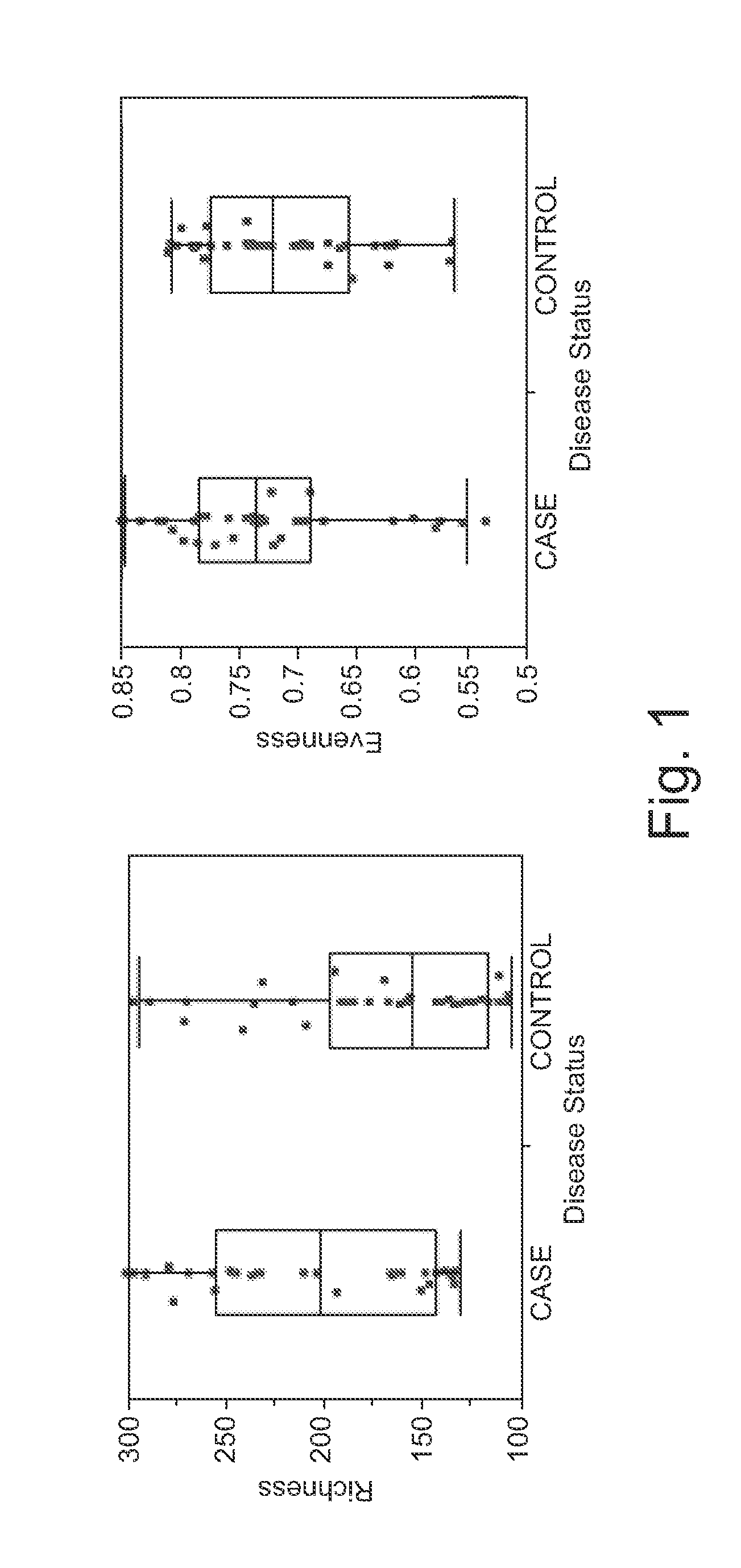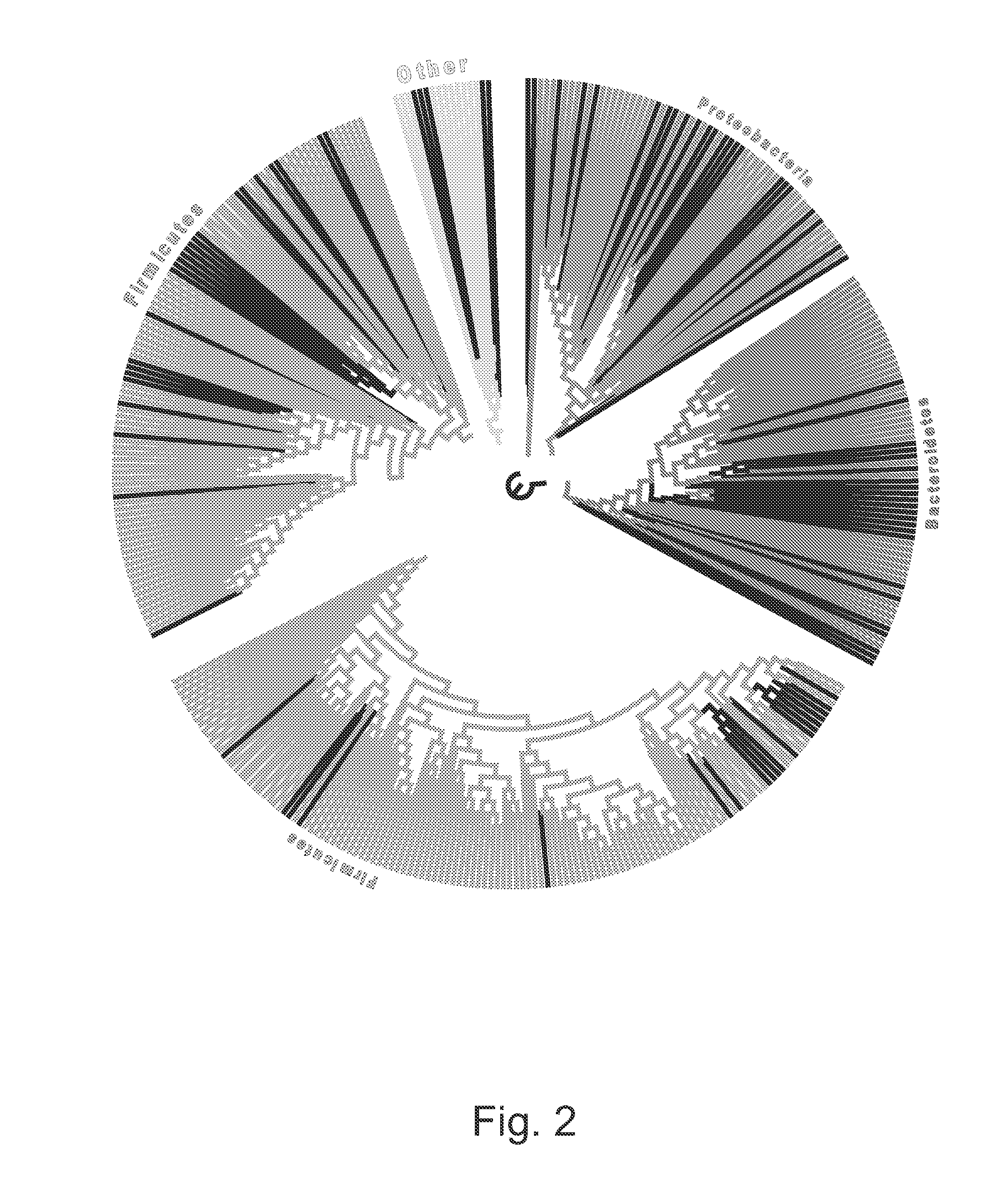Methods and kits for detecting adenomas, colorectal cancer, and uses thereof
a technology for colorectal cancer and adenomas, which is applied in the field of methods and kits for detecting adenomas and colorectal cancer, can solve the problems of compliance, accuracy, precision, inter- and intra-individual variability, etc., and achieve the effect of reducing the number of false negatives
- Summary
- Abstract
- Description
- Claims
- Application Information
AI Technical Summary
Benefits of technology
Problems solved by technology
Method used
Image
Examples
Embodiment Construction
[0064]This disclosure is directed to a method for detecting colorectal adenoma in a patient which comprises: (a) obtaining a suitable patient sample; (b) measuring a level of five or more bacteria selected from a group consisting of Acidovorax, Acinetobacter, Agrobacterium, Akkermansia, Alistipes, Allobaculum, Aquabacterium, Azonexus, Bacillaceae—1, Bryantella, Carnobacteriaceae—1, Chryseobacterium, Chryseomonas, Cloacibacterium, Comamonas, Dechloromonas, Delftia, Enterobacter, Erwinia, Exiguobacterium, Flavimonas, Fusobacterium, Gp1, Gp2, Helicobacter, Lactobacillus, Lactococcus, Leuconostoc, Methylobacterium, Micrococcineae, Novosphingobium, Pantoea, Pseudomonas, Pseudoxanthomonas, Roseburia, Rubrobacterineae, Serratia, Shinella, Sphingobium, Staphylococcus, Stenotrophomonas, Succinivibrio, Sutterella, Syntrophococcus, Turicibacter, Variovorax, and Weissella; and (c) comparing the patient sample levels with levels associated with a control sample, wherein elevated levels are indic...
PUM
| Property | Measurement | Unit |
|---|---|---|
| Electrical conductance | aaaaa | aaaaa |
| Level | aaaaa | aaaaa |
Abstract
Description
Claims
Application Information
 Login to View More
Login to View More - R&D
- Intellectual Property
- Life Sciences
- Materials
- Tech Scout
- Unparalleled Data Quality
- Higher Quality Content
- 60% Fewer Hallucinations
Browse by: Latest US Patents, China's latest patents, Technical Efficacy Thesaurus, Application Domain, Technology Topic, Popular Technical Reports.
© 2025 PatSnap. All rights reserved.Legal|Privacy policy|Modern Slavery Act Transparency Statement|Sitemap|About US| Contact US: help@patsnap.com



